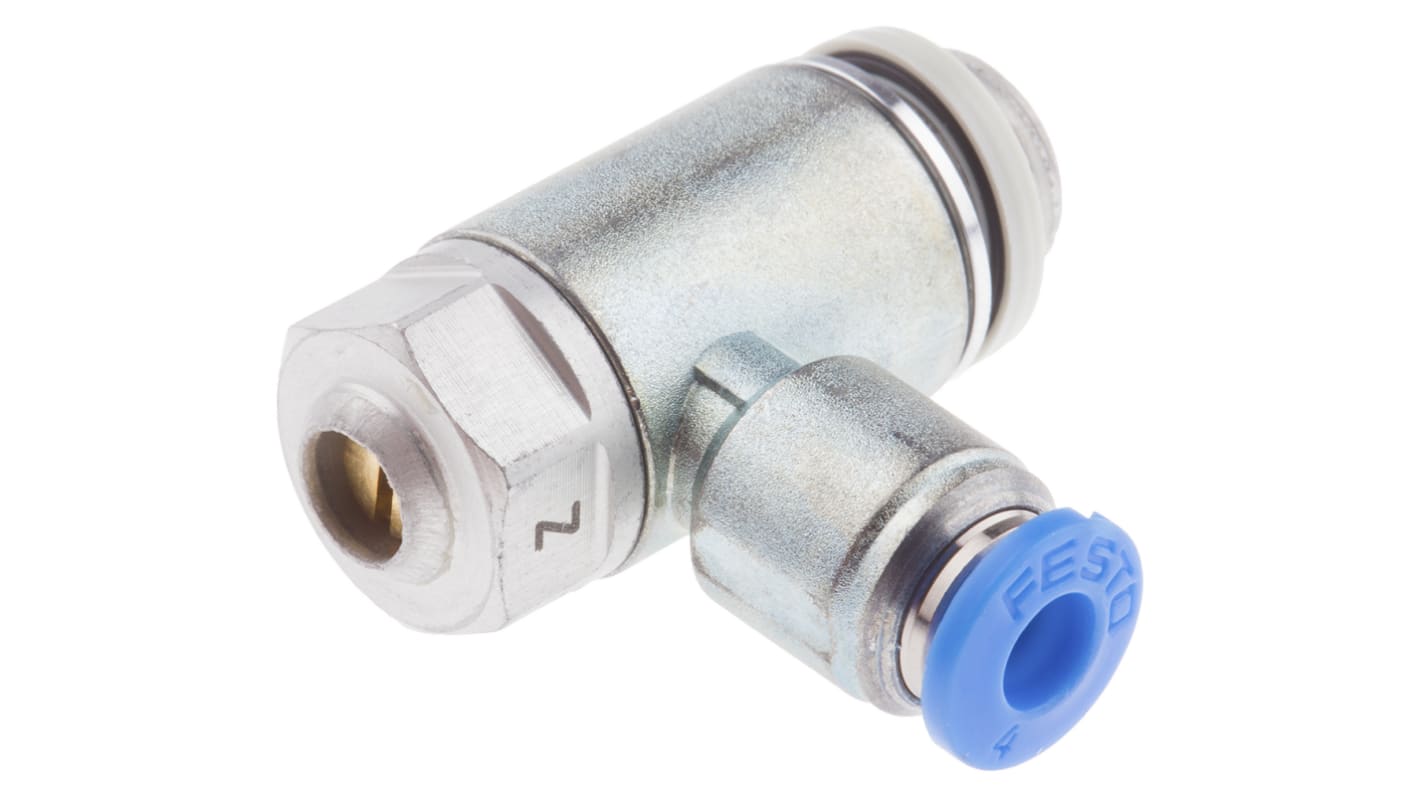Festo GRLZ Series Tube Flow Regulator, 4mm Tube Inlet Port x G 1/8 Outlet Port, 193157
- RS Stock No.:
- 121-4359
- Mfr. Part No.:
- GRLZ-1/8-QS-4-D
- Brand:
- Festo

Bulk discount available
Subtotal (1 unit)*
£16.42
(exc. VAT)
£19.70
(inc. VAT)
FREE delivery for orders over £50.00
In Stock
- 14 unit(s) ready to ship
- Plus 27 unit(s) ready to ship from another location
Need more? Click ‘Check delivery dates’ to find extra stock and lead times.
Units | Per unit |
|---|---|
| 1 - 4 | £16.42 |
| 5 - 9 | £15.76 |
| 10 + | £15.11 |
*price indicative
- RS Stock No.:
- 121-4359
- Mfr. Part No.:
- GRLZ-1/8-QS-4-D
- Brand:
- Festo
Specifications
Technical Reference
Legislation and Compliance
Product Details
Find similar products by selecting one or more attributes.
Select all | Attribute | Value |
|---|---|---|
| Brand | Festo | |
| Type | Flow Controller | |
| Inlet Port Type | Tube | |
| Tube Inlet Port | 4mm | |
| Manufacturer Series | GRLZ | |
| Outlet Port Type | Threaded | |
| Threaded Outlet Port | G 1/8 | |
| Minimum Outlet Pressure | 0.2bar | |
| Maximum Outlet Pressure | 10bar | |
| Threaded Outlet Thread Standard | G | |
| Threaded Outlet Thread Gender | Male | |
| Standards Met | ISO8573-1:2010 | |
| Threaded Outlet Thread Size | 1/8 in | |
| Body Material | Aluminium Alloy | |
| Model Number p | 193157 | |
| Select all | ||
|---|---|---|
Brand Festo | ||
Type Flow Controller | ||
Inlet Port Type Tube | ||
Tube Inlet Port 4mm | ||
Manufacturer Series GRLZ | ||
Outlet Port Type Threaded | ||
Threaded Outlet Port G 1/8 | ||
Minimum Outlet Pressure 0.2bar | ||
Maximum Outlet Pressure 10bar | ||
Threaded Outlet Thread Standard G | ||
Threaded Outlet Thread Gender Male | ||
Standards Met ISO8573-1:2010 | ||
Threaded Outlet Thread Size 1/8 in | ||
Body Material Aluminium Alloy | ||
Model Number p 193157 | ||
- COO (Country of Origin):
- DE
Festo Flow Regulator, 4 mm Tube Inlet Port - GRLZ Series - GRLZ-1/8-QS-4-D
Choose this Festo regulator for precise control of compressed-air flow. It's suitable for regulating the piston speed of a pneumatic drive during advance and return strokes. This device can be used with either exhaust or supply air direction and has an operating pressure range of 0.2 bar to 10 bar. An adjusting screw lets you manually set the pressure output with the help of a screwdriver. The metal body and zinc die-cast swivel fitting make the unit robust and long-lasting.
• Threaded fitting for hassle-free coupling and uncoupling
• Lightweight and compact for improved compressed-air system efficiency
• Suitable for slow, medium or fast piston movement
• Nitrile rubber (NBR) seals resist abrasion and ensure an airtight lock when the valve is closed
• Lightweight and compact for improved compressed-air system efficiency
• Suitable for slow, medium or fast piston movement
• Nitrile rubber (NBR) seals resist abrasion and ensure an airtight lock when the valve is closed
Application Information
• Materials handling
• Robotic automation
• Manufacturing industry
• Electronics industry
• Robotic automation
• Manufacturing industry
• Electronics industry
What's the difference between a pneumatic and electric drive?
Pneumatic and electric drives perform similar functions but differ in terms of strength. When compressed air is properly controlled and maintained, a pneumatic drive is capable of delivering higher force densities and speeds for lower reduced energy use and a longer service life.
Related links
- Festo GRLZ Series Tube Flow Regulator 193159
- Festo GRLZ Series Tube Flow Regulator 193154
- Festo GRLZ Series Tube Flow Regulator 193158
- Festo GRLZ Series Tube Flow Regulator 193155
- Festo GRLZ Series Threaded Flow Controller 151188
- Festo LRL Series Threaded Flow Regulator 153511
- Festo GRLA Series Tube Exhaust Valve 193143
- Festo GRLA Series Tube Exhaust Valve 197580
